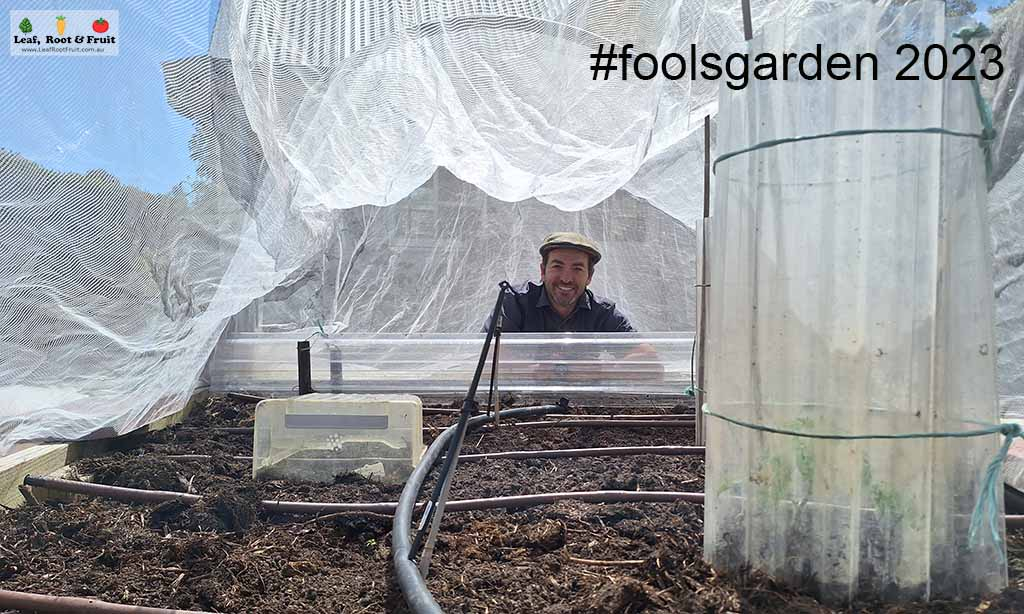
Long term readers will know that I live in Kyneton, a town in Central Victoria. The winters here are cold, with heavy frosts. Our summers are much hotter than in Melbourne and very dry.
The growing season for summer vegetables is short in my garden. Local gardeners know better than to transplant tomatoes before Melbourne Cup Day. Last year we even had a few mild frosts in December.
The weather over the previous three summers have been La Nina weather patterns. Each one vastly different. Last summer, in 2022, we had an especially wet spring. This resulted in our wettest year on record. It took forever for the soil to warm up. Many of my fruit trees failed to set fruit and quite a few summer vegetable crops were complete failures.
This winter and early spring has been incredibly dry by comparison to last year. The ambient temperatures have been mild and frosts have been minimal. There’s still plenty of firewood stashed in the shed, because we haven’t needed the wood burner cranking as much as in previous years.
Earlier this week, the interns and I turned a hot compost pile. Before replacing the compost thermometer, I checked the temperature of the soil. At this time of the year, it is normally languishing below 10 degrees. To my amazement it showed 21 degrees! Our soil doesn’t normally warm up this much until late December.
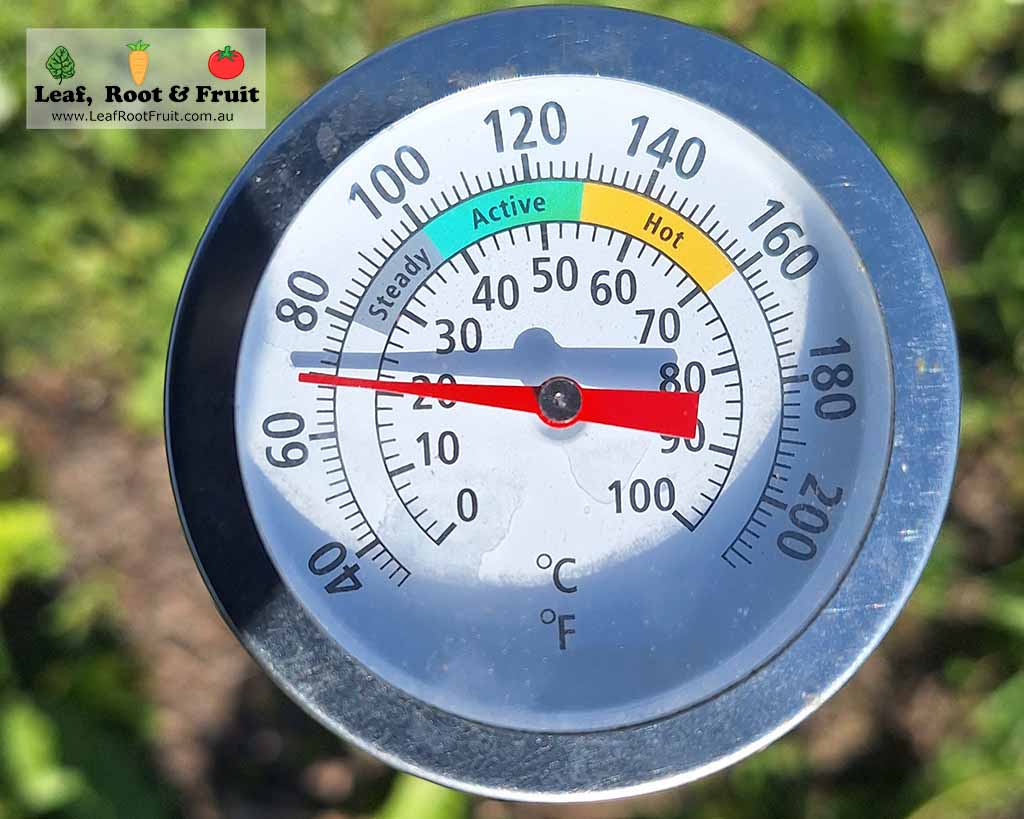
I double checked the temperature in several places around the garden and each reading was roughly 20 degrees. The coldest soil temperature that I could find was in an area covered in knee length grass and even that was a balmy 17 degrees. All readings were taken approximately 10 cm below the soil surface.
A mild winter, combined with the warm weather of late, has the soil warming quickly, the moisture levels plummeting, and the plant growth exploding (especially the weeds).
I’m always encouraging gardeners to be patient and wait for the soil to warm up before planting. But now I’m struggling to follow my own advice. The excited, impulsive part of me just wants to get planting. The rational part of me knows there’s still plenty of opportunity in the next 6 weeks for heavy frosts, cold weather and temperature fluctuations. Common sense says to hold off planting summer crops.
But “what if?”
What if we’ve had our last frost for the year?
What if we are going to have an extra 6 weeks in our growing season?
What if I hold off planting for another six weeks and realise I could have planted in late September after all?
The world is full of “What ifs?”
I often use the motto “It’s better to regret trying something, than not doing it at all”.
I have plenty of space to grow food.
It took me 24 hours of soul searching before I came around to ignoring my own advice. Sometimes you’ve just got to push the boundaries. At the very least, I’m considering this just part of an extended succession planting or a demonstration of what not to do.
So here’s my plan.
My “Fool’s Garden” 2023
I’m going to dedicate one of our 8 raised vegetable garden beds to a trial planting of early crops.
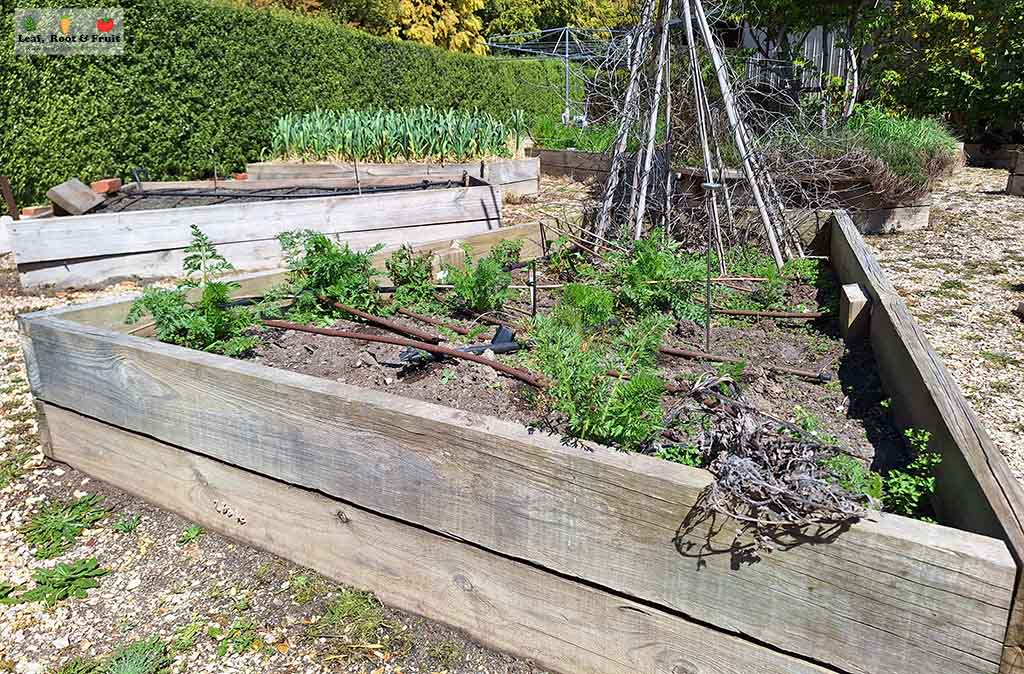
In this garden bed I am going to plant:
- 2 x spare tomato seedlings. I’m planting Broad Ripple Currant and Jaune Flamme as they have both been reliable, early croppers and tolerant of the cold.
- 1 x row of Cucumber seed, directly sown
- 1 x zucchini plant, directly sown
- 1 x trellis of runner beans, directly sown
I’m confident the beans will be fine. I honestly have no idea how the other crops will fare. Thus, I’m labelling this garden a “Fool’s Garden”.

Strategies I will use to improve my chances of a successful Fool’s Garden
I’ll be improvising some small cloches from clear containers to help improve the microclimate of the cucurbit seedlings.
The whole garden bed will have insect netting draped over it. I usually use insect netting to cover my main tomato crops. This helps to prevent pest attack, but using the netting from day one helps to act as a wind break, increase ambient temperature inside the netting and create a warm microclimate. In the past, this netting has been enough to protect my tomatoes from light frost. It also means that I don’t need to harden off my seedlings before transplant.
See my guide to different methods you can use to protect young seedlings and early vegetable crops for some ideas you might like to try.
You can also read my guide to making an early start in the vegetable patch.
I’ll keep you updated on my Fool’s Garden
What about you?
Do you think I’m crazy, or are you also jumping the gun and making a super early start in your vegetable patch? If so, please keep me updated so we can all learn together from this experience. You can leave a comment on this blog, or use hashtag #foolsgarden2023 in your social media posts.
Soil preparation (30/09/2023)
Planting Day (01/10/2023)
See my spring planting guide for a list of other vegetables you can consider planting.
Fool's Garden Update: Day 19 (20/10/23)
The beans and zucchini have germinated. The beans have germinated in the Fool’s Garden. It took 18 days for both, which is much longer than the usual 7 to 10 days. I can already see signs of earwig or slater damage to the tender young shoots.
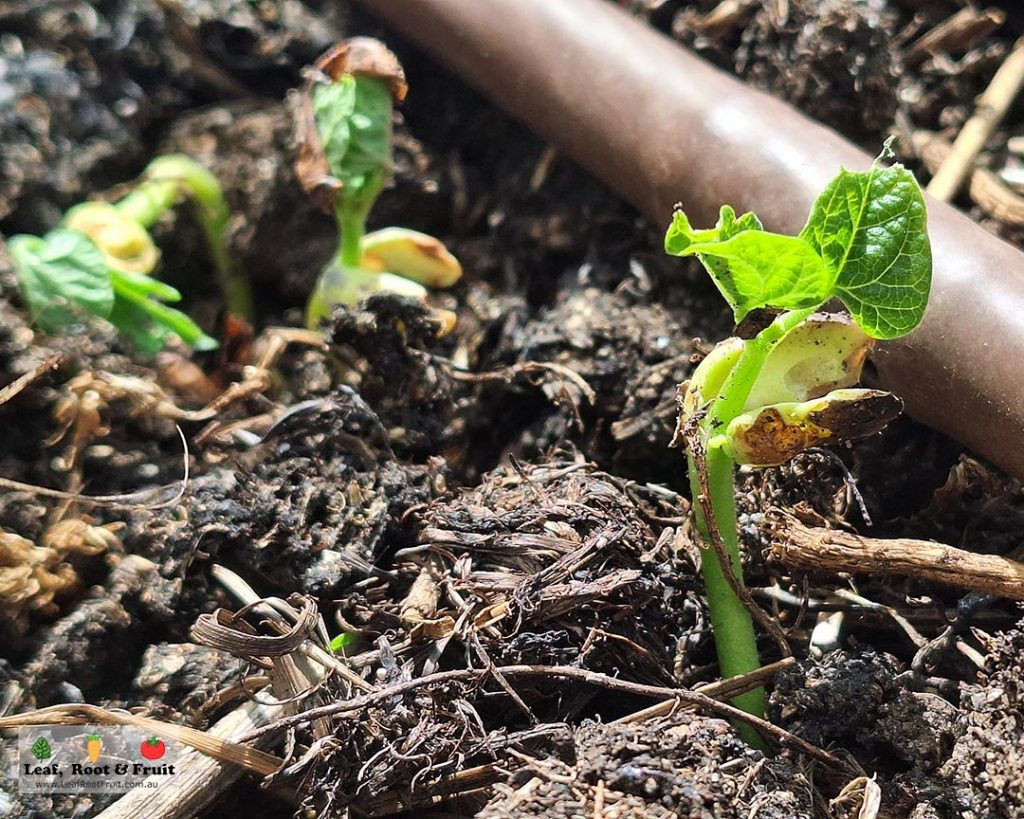
The tomatoes are thriving…. or are they? Compare the healthy and flowering plants in the Fool’s Garden to those still in the greenhouse!
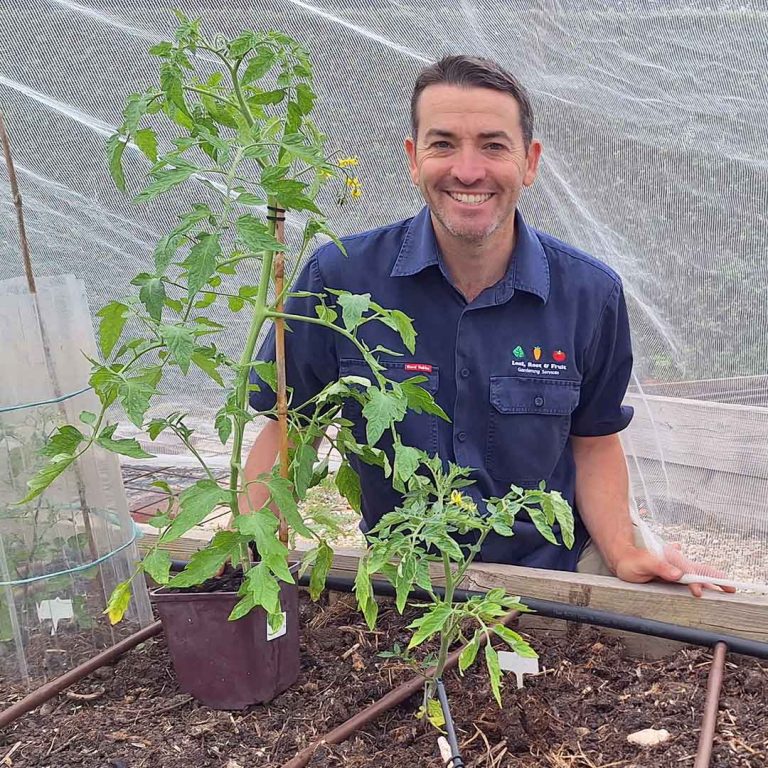
Both of the tomato plants in this image were grown from seed sown on the same day. They are both the same variety.
The main difference is that the plant on the right of the image was planted into the garden on the 1st October as part of my #foolsgarden2023. It looks healthy, it has flowers and no sign of frost damage. It would appear that the Fool’s Garden was successful.
Until you compare it to another plant…
The plant on the left has been potted up and continued to thrive in the greenhouse.
What a difference!
Planting your sensitive summer crops too early slows their growth. This leaves them prone to pest attack and disease.
It has been such a warm spring, if early planting was going to be of benefit in any year, it would be this one. And it hasn’t.
Patience is a virtue!
Check out the video for a full update.
Fool's Garden Update Day 26 (27/10/23)
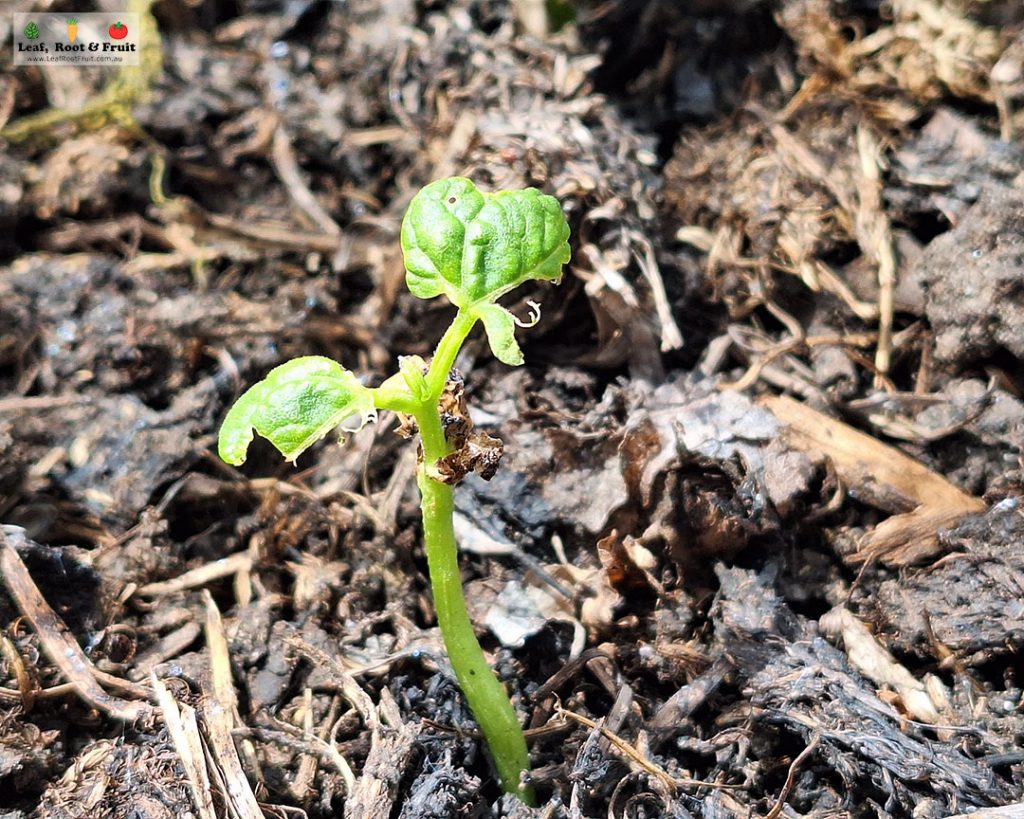
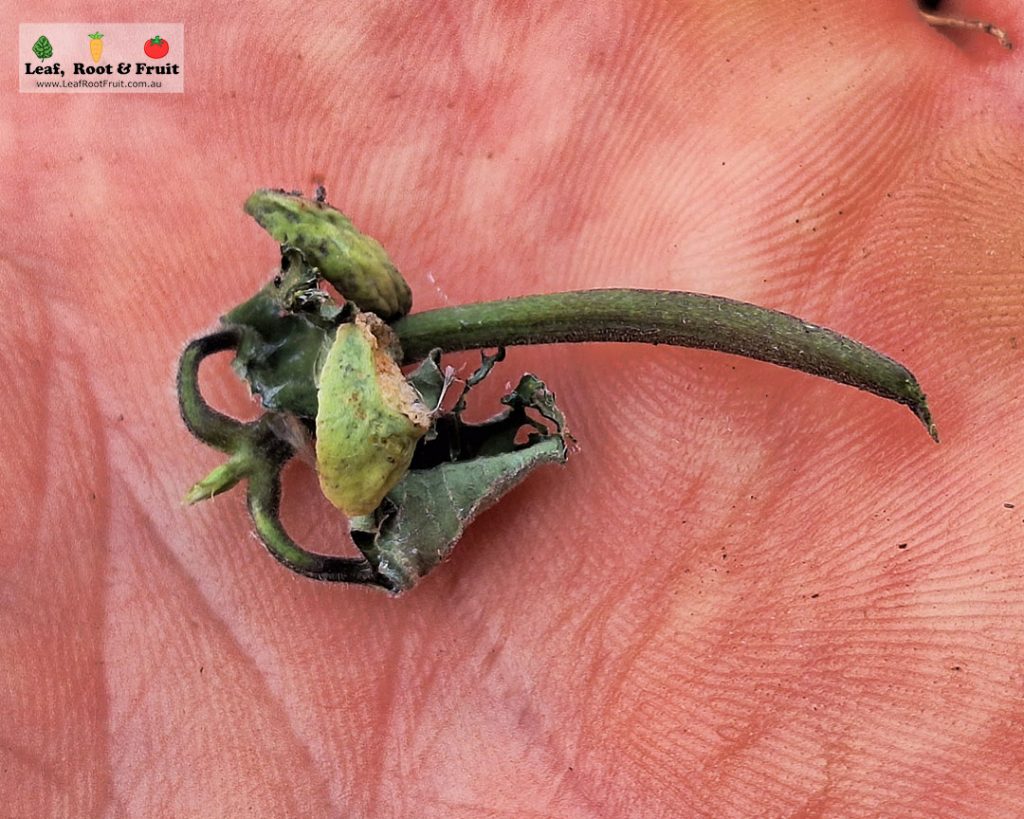
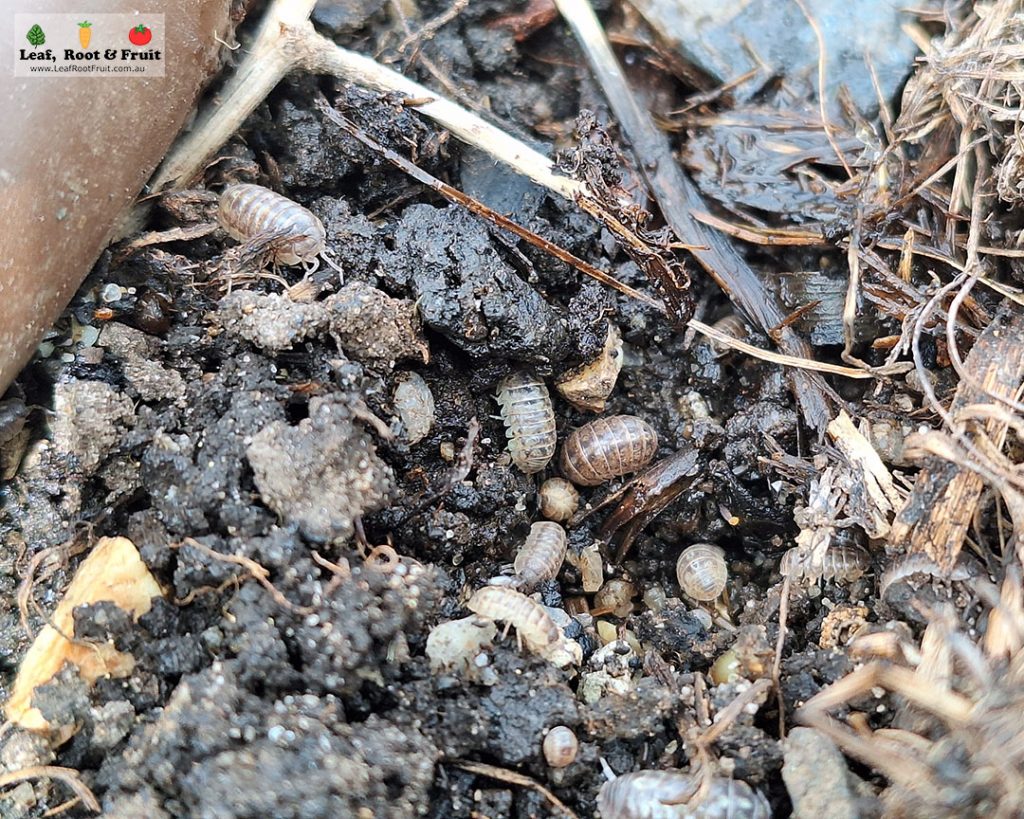
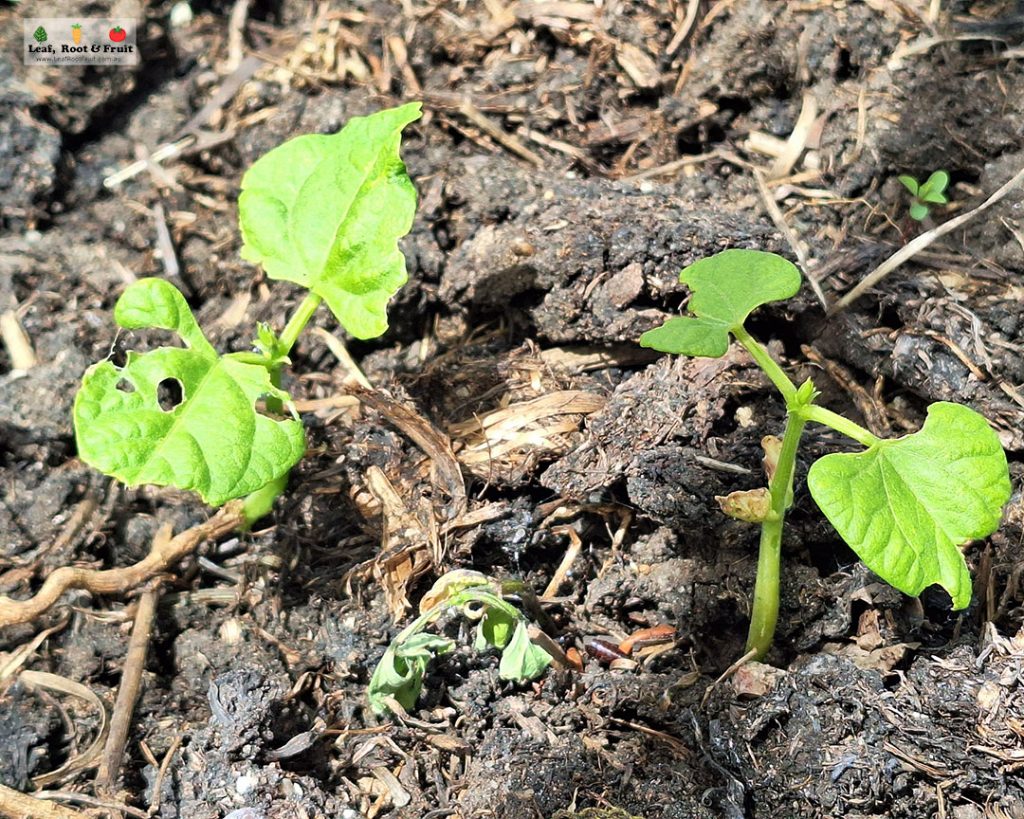
Melbourne Cup Day Update (7/11/23)
Melbourne Cup Day is the traditional time for many gardeners to plant their tomatoes into the garden.
Today I removed the polycarbonate sheets that were protecting the tomato plants. I weeded the garden and planted out some cucumber seedlings that I had started in the greenhouse.
The beans had been completely destroyed by slaters and earwigs. I used the vacant space to plant out a tomato seedling and a zucchini seedling. This will allow me to compare the effects of transplant shock for later planted seedlings vs those planted back at the start of October.
Check out the video for more details.
Trellis Installation and Update (24/11/23)
Today I took the netting off the Fool’s Garden and installed some trellises to support the tomatoes and cucumbers.
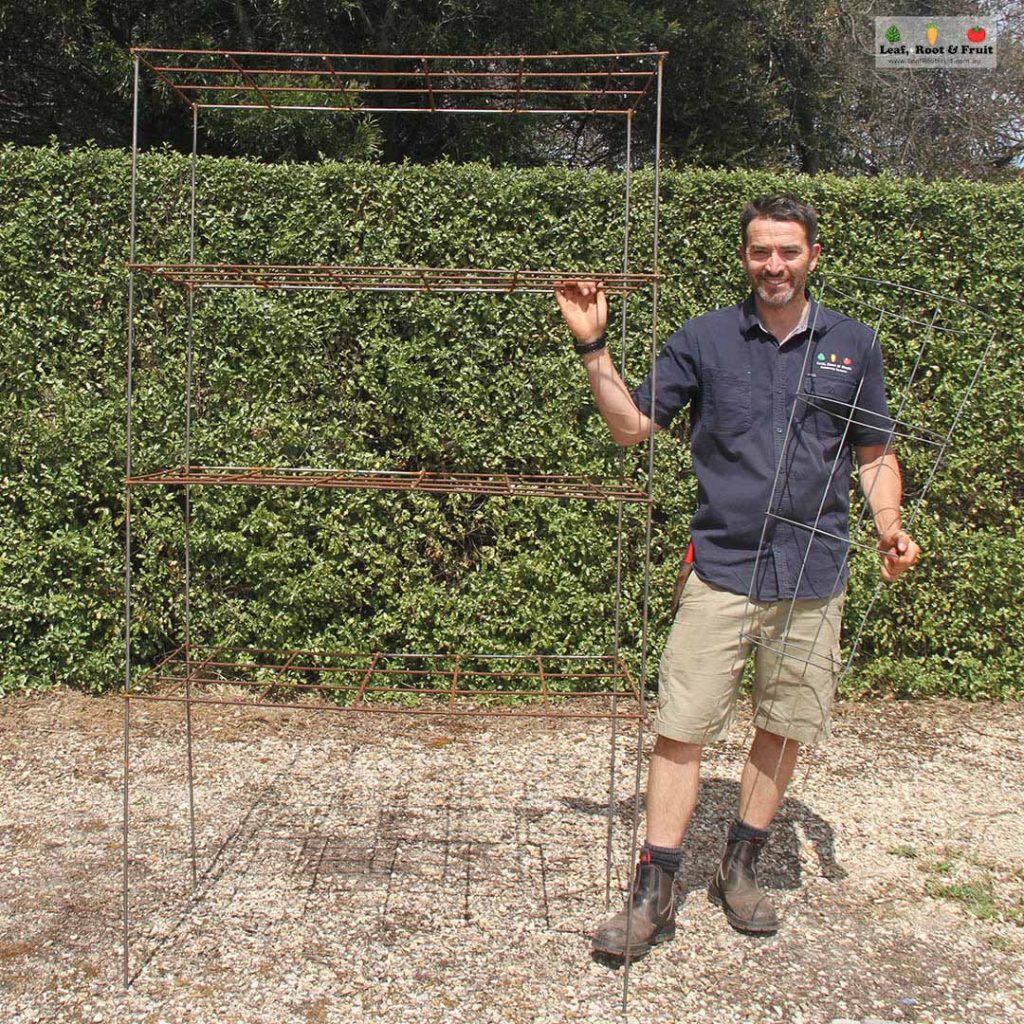
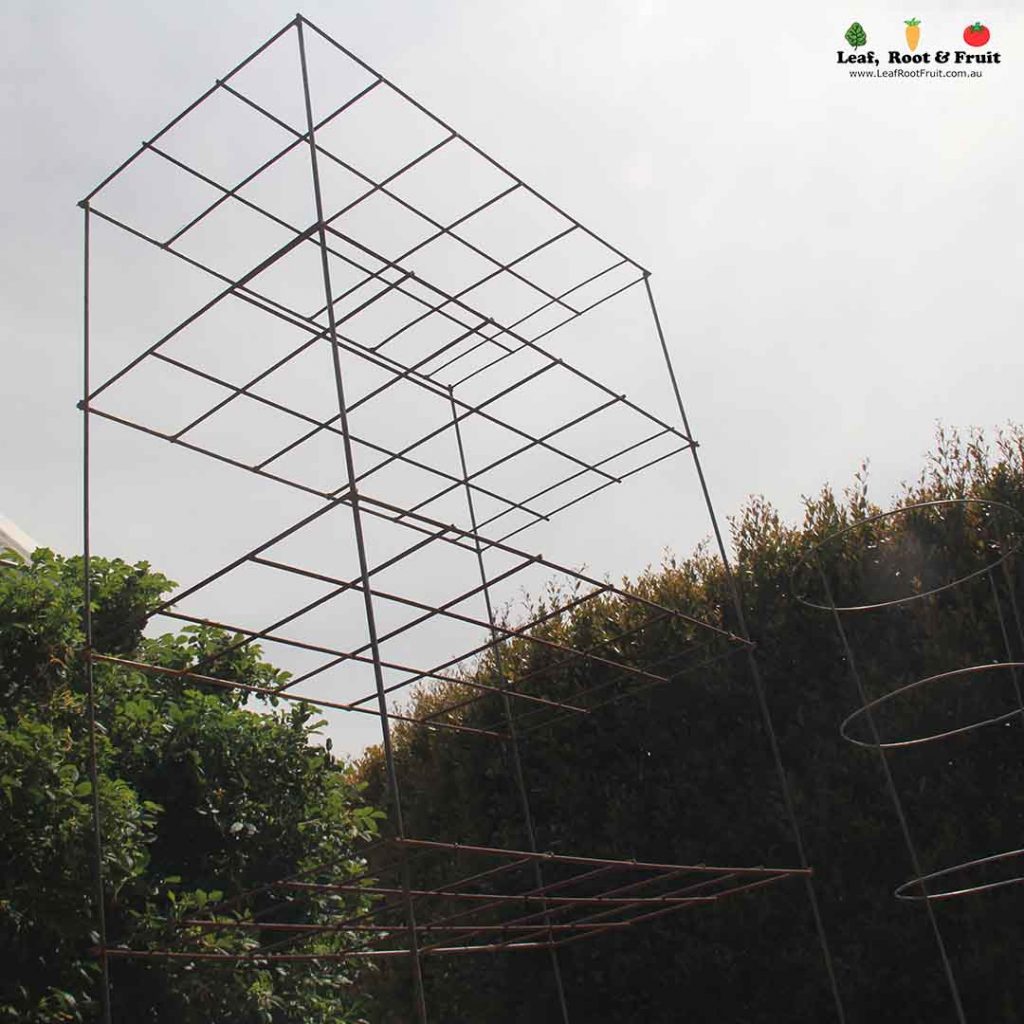
The whole garden is thriving. The cucumbers look strong and healthy.
The zucchinis are doing well. One was sown directly (the one on the left in picture 3). A second plant was transplanted from a greenhouse raised seedling. At this stage the plants look very similar in size. The directly sown one has more damage to the leaves, but has a darker colour.
There’s a bigger difference in the tomatoes. The plant that was transplanted early has no tomatoes set on it (the one on the right in picture 4). The later transplanted tomato has plenty of fruit set. I think the first ripe fruit on this plant is only a week or so away. The earlier transplanted tomato has darker leaves. At this stage, despite any transplant shock, it seems that the patience approach is still the best way to go.
First Harvests From the Fool's Garden (20/12/23)
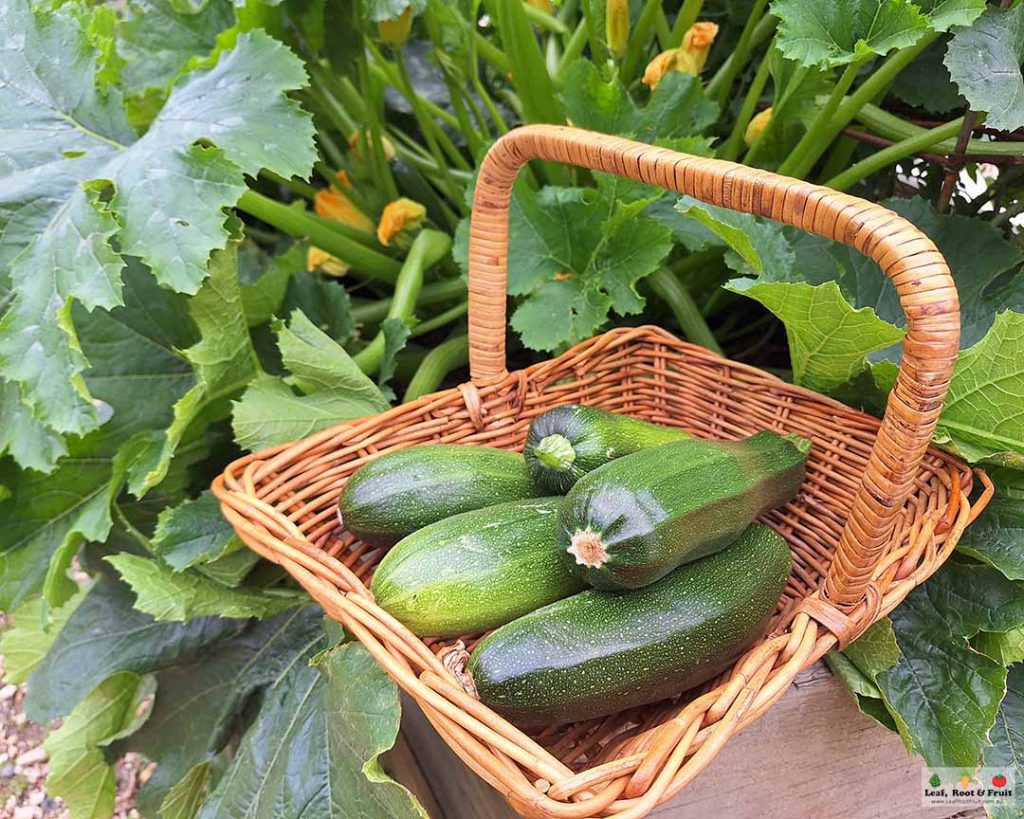
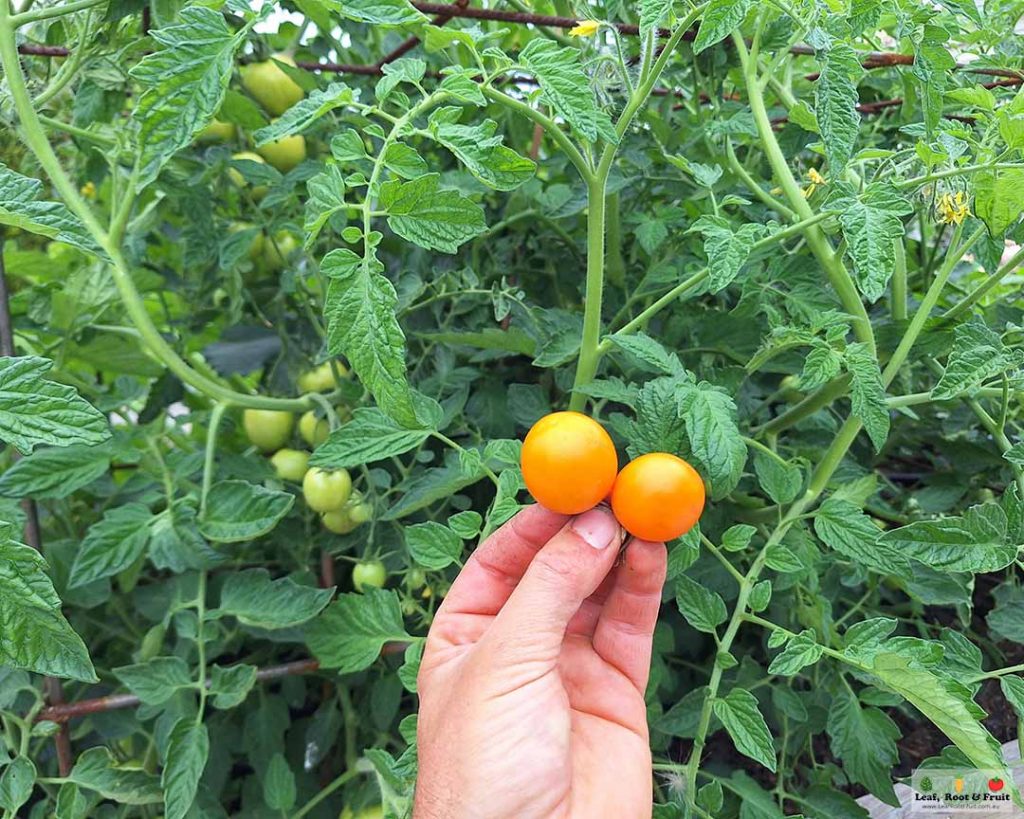
The difference between the tomato plants is incredible. Both plants are lush, strong and healthy, but the later transplanted one is covered in large ripening fruit. I picked the first fruit from the later plant this week.
The earlier transplanted plant has far fewer fruit and looks like it will be a few more weeks until they ripen.
Fool’s Garden: The final word on early planting
It was clear early on in the Fool’s Garden experiment that early planting for cucumbers is fatal here. The seeds that I sowed directly failed to germinate. I replaced them with seedling raised cucumber plants once the weather improved. Zucchini were more resilient and there wasn’t much difference between the early, directly sown and greenhouse-raised and later transplanted seedlings. However, in other years, early planting zucchini may lead to failure due to frost damage.
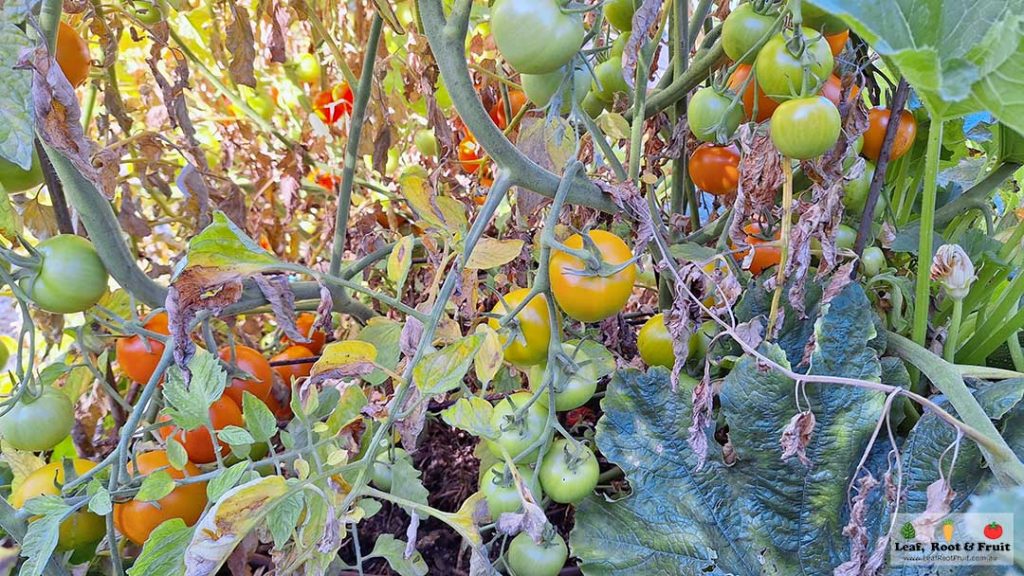
There was a bigger difference in the two tomato plants. The earlier transplanted tomato plant has finally caught up to the later planted one. However, the later-planted tomato was productive for a full six weeks before the earlier-planted one caught up. For me, I’ll be more inclined to exercise patience in the future. I hope this little experiment has also been useful and interesting for you too.


My bean seedlings are doing well, but we do have a little warmer climate here at Phillip Island as long as you protect from the wind. Even spotted a few self seeded tomatoes so keeping an eye on them before transplanting to a better position. Keeping other seeds covered with glass except on warmer days.
Hi Linda,
yes your winter climate will be much warmer (and windier) than here in Kyneton. Glad the beans are doing well. Here’s hoping ours can out run the earwigs!
Happy gardening
Duncan
Yes, earwigs, slugs, snails and slaters argh our enemies.
I’m also thinking of planting a “Fools Garden” and follow your lead too. I’ve been given excess tomato seedlings from a friend, which are 50cm high. (He planted too many seeds too early). I either have to plant them out or pot them up again and I have my own seedlings as backup anyway. I’ve been tempted to plant them out, plant them deep and protect them with plastic tree guards. Still procrastinating!!! We are being warned this Summer is going to be a “belter”. Do we plant out early? Do I leave it to my “normal” planting time. ( Melbourne Cup Day) With climate change are these planting times still relevant. I’m still tempted to follow you lead. I planted out a bed of Sweet corn in a lasagne style bed today, the seedlings were ready to go. I’ve nothing to lose really, just the cost of a packet of seeds.
We can tie ourselves in knots over this, or just give it a go. If you’ve got the space then I say go for it!
I’ll look forward to your updates Heather.
Good luck! Duncan.
When do I start growing seeds for tomatoes and chillies in Warburton?
Hi Cynthia,
Thanks for your question. In Melbourne I usually sow tomato seeds in the greenhouse in July. Transplant date varies depending on your microclimate. See my blog post on Growing Great Tomatoes for more information on timing your tomato crops.
Good luck with the season ahead!
Duncan
Hi Duncan,
I love your Fool’s Garden concept – I’ve been doing this for years (with tomatoes mostly) with very variable results: and now I have a name for it!
It seems its success depends very much on the weather (always a gamble); on choosing suitable varieties (“Early” and/or cold tolerant) together with a pinch of TLC, ie wind and frost protection
My Fool’s Garden this year – 5 tomatoes in 5 very large pots, with mini-greenhouse covers (large plastic bottles) – started slowly but is going gangbusters now because of the warm spring. No ripe fruit on them yet, but plenty of flowers and green fruits. The varieties are Orange Sunrise, Oregon Spring, Stupice, Tasmanian Chocolate, and Green Zebra. Not all particularly early ones, but all doing much the same.
I also tried some fairly reliable cucumbers: Green Apple. But they seem to have been attacked by something which has infected them with fasciation; I’ve pinched out the affected tops, but they’re not doing so well. I haven’t identified the pest (if that’s what’s done it) but there are plenty of slaters and earwigs about. (You’re so right about those guys attacking early beans – I’ve found one way to trap lots of them is a “Beer Trap” loaded with water and a layer of LIINSEED OIL – they seem to love it and will happily drown).
I suppose the other thing you could do is put some chickens or ducks in the bed for a day or two, to gobble up the pests – before you plant anything of course!
I didn’t do any turning over of soil, or digging in compost (at 77, that’s a bit beyond me): but I did add a thin layer of compost and a few handfuls of a complete organic fertilizer before I planted anything; and scrounged around for some mulch to add afterwards. For supports, I like the mesh cage system – once made, they can be re-used many times over, also for supporting tall broad beans in winter. Shorter plastic mesh cages help keep the shorter varieties off the ground.
Pots do warm up, and dry out, quicker than ground-level beds, so they have needed more watering than the rest of the garden. Even so, I notice some beds drying out quicker than others, in spite of our “average” rainfall (ha,ha! what even is that?!), 933mm so far this year. But we’ve hardly had frost at all for a number of years now.
Many thanks for your work!
Hi Rose,
Thanks for the comprehensive wrap up of your own spring plantings this year.
I’m noticing more than usual fasciation in my asparagus, as are several other locals. I wonder if its the same culprit as your cucumbers?
Yes, linseed oil works wonders for attracting earwigs. As does heading out at night with a head torch and cup of soapy water. I’ve now learnt that being patient and planting later in the season is the best way to avoid them.
Good luck and happy gardening!
Duncan